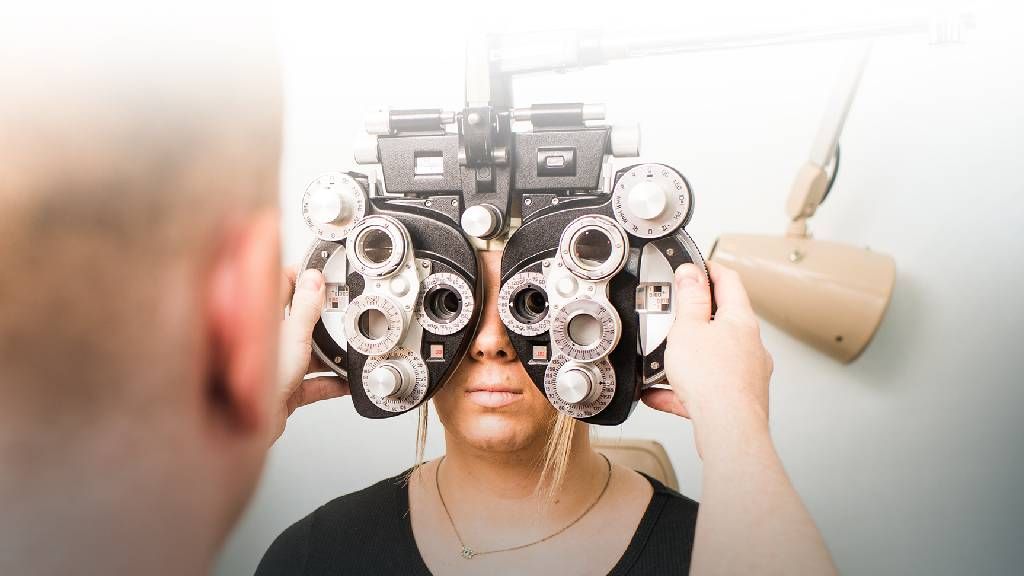Checking Out the Spectrum of Eye Conditions Treated for Improved Vision Wellness
In the world of vision health, a varied variety of eye conditions exists, varying from common refractive errors to a lot more complicated persistent diseases. These conditions usually posture difficulties to people seeking optimal aesthetic acuity and comfort. By checking out the spectrum of eye disorders that can influence one's vision, a deeper understanding of the details included in preserving eye wellness arises. The interplay of numerous factors, from age-related modifications to structural abnormalities within the eye, underscores the importance of thorough treatment tailored to each details condition. As we navigate through the landscape of treatments and interventions focused on enhancing vision health, a more detailed look at the nuanced methods utilized in addressing these problems clarifies the developments in the area of ophthalmology and the promising prospects they hold for those making every effort for improved aesthetic health.
Typical Refractive Errors
Refractive mistakes, such as nearsightedness, astigmatism, and hyperopia, prevail vision problems that impact the clearness of vision. Myopia, likewise referred to as nearsightedness, triggers distant challenge show up blurred, while hyperopia, or farsightedness, makes close-up objects tough to see plainly. Astigmatism causes distorted or fuzzy vision in all ranges because of an irregularly shaped cornea.
These refractive mistakes happen when the shape of the eye stops light from focusing straight on the retina, causing blurred vision. Nearsightedness is usually triggered by the eyeball being as well long, hyperopia by the eyeball being too brief, and astigmatism by an irregular curvature of the cornea or lens.
The good news is, these typical refractive mistakes can be fixed with different methods such as prescription spectacles, get in touch with lenses, or refractive surgical treatment like LASIK. By resolving these visual problems, individuals can experience improved clearness and intensity of vision, ultimately enhancing their total lifestyle. Regular eye examinations are vital for detecting and managing these problems to maintain optimum eye wellness.
Age-Related Eye Conditions
As people age, they might end up being more at risk to different eye conditions that can influence their vision wellness. Age-related eye problems prevail among older adults and can substantially impact their lifestyle. One of one of the most common age-related eye conditions is presbyopia, an all-natural component of aging where the lens of the eye sheds its adaptability, resulting in problem concentrating on close things. Age-related macular degeneration (AMD) is another considerable worry, influencing the central component of the retina and bring about a loss of main vision. Cataracts, characterized by the clouding of the eye's lens, are also often seen in older people and can create blurred vision. Glaucoma, a team of eye conditions that harm the optic nerve, is much more usual with age and can result in vision loss if left unattended. Routine eye evaluations, very early detection, and prompt treatment are vital in handling age-related eye problems and maintaining optimal vision health as people expand older.
Chronic Eye Diseases
With a view it now change from age-related eye problems to persistent eye conditions, the emphasis now transforms to long-lasting conditions Learn More Here that require ongoing administration to protect vision health and wellness. Andalusia Pediatrics. Persistent eye illness incorporate a variety of problems that influence the eyes over an extensive period, often bring about dynamic vision loss if left unattended. Illness like glaucoma, diabetic person retinopathy, age-related macular deterioration, and chronic completely dry eye disorder fall under this group
Age-related macular degeneration influences the central part of the retina, influencing sharp, main vision. Chronic completely dry eye syndrome, on the other hand, can cause discomfort and prospective damages to the cornea if not appropriately dealt with.
Very early discovery, routine surveillance, and adherence to treatment plans are necessary in taking care of chronic eye diseases to avoid vision deterioration and preserve optimum eye health and wellness. Normal eye examinations and examinations with eye treatment professionals play a crucial function in the recurring monitoring of these problems.
Corneal Disorders
Generally affecting the outer layer of the eye, corneal disorders incorporate a variety of problems that can influence vision and total eye health. The cornea, a clear dome-shaped surface area covering the front part of the eye, plays a crucial duty in concentrating light and shielding the eye from particles and infection. When the cornea is influenced by problems such as keratoconus, corneal ulcers, or dystrophies like Fuchs' endothelial dystrophy, it can bring about signs like blurry vision, pain, sensitivity to light, and in severe situations, vision loss.
Keratoconus is a progressive thinning of the cornea that results in a cone-like lump, misshaping vision. Corneal abscess, commonly brought on by infections or injuries, can bring about soreness, discharge, and serious discomfort. Fuchs' endothelial dystrophy impacts the back layer of the cornea, causing liquid accumulation and gloomy vision.
Therapy for corneal problems differs relying on the specific problem but may include medicines, corneal cross-linking, or in extreme situations, corneal transplant surgical treatment to recover vision and alleviate signs. Regular eye examinations are crucial for very early detection and administration of corneal disorders to protect vision health.
Retinal Problems

Age-related macular degeneration is a leading reason of vision loss in people over 50, affecting the macula in the facility of the retina. Retinitis pigmentosa is a hereditary disorder that creates a steady loss of vision due to deterioration of the retina's light-sensitive cells.
Early detection and prompt intervention are crucial in handling retinal problems to maintain vision and protect against irreparable damage. Neurologist Andalusia. Routine eye tests and prompt treatment are vital in keeping retinal health and maintaining visual function

Final Thought
To conclude, exploring the spectrum of eye conditions treated for improved vision health and wellness exposes the large array of issues that can affect the eyes. From typical refractive mistakes to persistent eye diseases, recognizing these problems is critical for keeping ideal vision wellness. By dealing with and treating these various eye problems, individuals can preserve their vision and total lifestyle. It is very important to look for regular eye tests and talk to medical care specialists for proper diagnosis and therapy.
Normal eye exams, very early detection, and timely treatment are essential in managing age-related eye conditions and maintaining optimum vision health as people expand older.
With a change from age-related eye problems to persistent eye illness, the focus now turns to long-lasting conditions that call for continuous administration to protect vision wellness. Chronic eye illness include a variety of conditions that impact the eyes over a prolonged period, often leading to dynamic vision loss if left untreated.Generally affecting the outer layer of the eye, corneal disorders encompass a range of conditions that can affect vision and general eye health and wellness.In final thought, discovering the spectrum of eye problems treated for boosted vision wellness reveals the vast array of concerns that can influence the eyes.